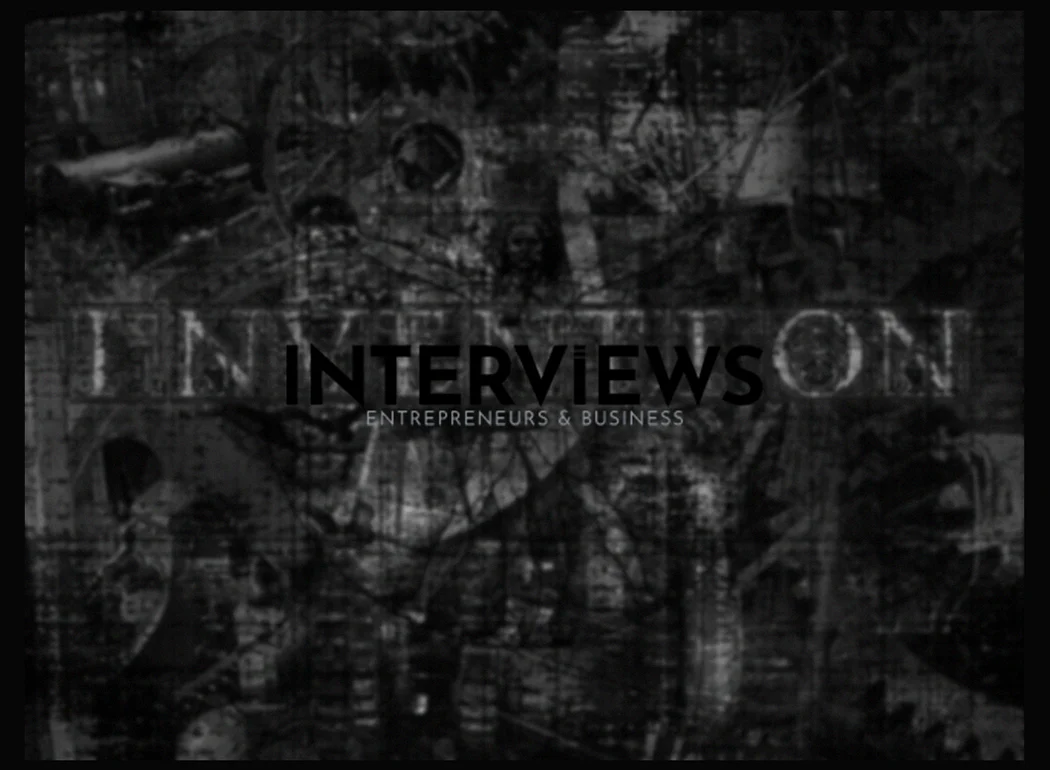Unleash Your Inner Edison: A Humorous Hitchhiker’s Guide to Inventing Awesome Stuff
Ever thought, “There’s a better way!”? You might be an inventor. Inventing doesn’t require lab coats or bubbling beakers. It’s a step-by-step process anyone can follow with curiosity and stubbornness. Ready for a fun ride? Let’s dive in.
I. Cracking the Code: The Invention Process Demystified
A. The Inventor’s Roadmap: Steps to Eureka!
Think of inventing like baking. Instead of flour and sugar, you use problems and ideas. Here’s your recipe:
- Spotting the Glitch in the Matrix: Identifying a Problem or Need Start with keen observation. Be a ninja in your own life. Look for things that annoy you or don’t work well. Untied shoelaces or quickly cooling coffee? These are potential goldmines for invention!
- Sherlock Holmes Mode: Research Existing Solutions Before declaring yourself an inventor, do some digging. Has someone solved your problem already? Use the internet to look for existing solutions. You may save time unless you want to invent a better wheel.
- Brainstorm Bonanza: Ideas Gone Wild Now it’s time for ideas! Let your mind roam free. No idea is too silly now. Write down every wacky thought. You can sort through the chaos later.
- Blueprint Brainstorming: Develop a Detailed Design Put on your architect hat. How will your invention work? Sketch, diagram, or describe it in detail. Think about materials and mechanisms that will make your idea a reality.
- Prototype Pandemonium: Create a Prototype Build a prototype. It’s a rough model of your invention. Perfection isn’t the goal; function is. Use cardboard, duct tape, or LEGOs. See if your idea works in the real world.
- Test-Drive and Tweak: Test and Refine Test your prototype! Does it do what you intended? Not perfectly at first? That’s okay! Testing reveals flaws. Refine your design based on what you learn—a way to level up your invention.
- Shout it From the Rooftops: Communicate Once you have a working model, share it! Show friends and family. Get feedback and explain your creation. Communication helps your invention get noticed.
B. Kid Inventor Mode: Unleashing Your Inner Child
No PhD? No problem! Kids are natural inventors. They haven’t learned why things can’t be done. Channel your inner child:
- Problem Radar: Observe Daily Life for Problems Look around! What everyday annoyances can you fix? Is making your bed a wrestle? Is your pet tripping you? These are all opportunities for invention inspiration!
- Idea Volcano: Brainstorm Solutions, Thinking Outside the Box Let imagination roam! No limits allowed. Think wild—like a teleporting toaster. Crazy ideas can lead to surprising solutions.
- DIY Time: Sketch and Build a Prototype Using Everyday Materials Gather paper, pencils, and recyclables. Sketch your ideas and build a prototype from what’s around. Use cardboard, rubber bands, or paper clips. Focus on tangible ideas.
- Feedback Fiesta: Test, Get Feedback, and Refine Test your creation! Does it work? Does it fail spectacularly? All experiences are valuable! Get feedback from friends or pets. Then improve your design through iteration.
- Showtime: Share the Invention, Participate in Challenges, and Learn from Others Share your invention! Enter science fairs or online challenges. Brag about it to everyone! Attend workshops and read books to gain knowledge. The invention community is supportive.
II. From “Aha!” to “Ta-Da!”: Turning Your Idea into an Invention/Product
A. The Invention Launchpad: Key Steps to Product Nirvana
Got a brilliant idea? Great! Let’s turn that idea into a product people can use (and buy). Here’s your roadmap:
- Idea Incubation: Conceptualize and Document the Invention Treat your idea like gold! Flesh it out and explore its potential. Write everything down! Keep details on inspiration, functionality, and selling strategies.
- Market Mission: Perform Product & Market Research Do your homework before spending money on manufacturing. Is there demand for your invention? Are similar products already available? Understand your market for success.
- Design Dive: Design your Product Get serious about design. Refine your prototype into a polished product design. Think of aesthetics, usability, and manufacturability.
- Prototype Proliferation: Manufacture a Prototype Create a refined prototype closer to the final product. Test for user experience and manufacturing feasibility.
- Patent Puzzle: Consider Patenting Is your invention unique? Explore patenting it! Patents protect your ideas from being copied. It can be complicated but worth it if you have something special.
- Manufacturing and Marketing Mayhem: Manufacturing and Marketing With design and prototype ready, it’s time to make and sell your invention. Find a manufacturer or plan for production yourself. Develop a marketing strategy to showcase your creation!
B. Idea Genesis: Conceptualization & Documentation Deep Dive
- Brainstorm & Polish: Brainstorm and clarify the initial idea Your idea is the starting point. Refine it, dissect it, explore every part. What problem does it solve? Clarity is essential for your journey.
- Documentation Dynasty: Keep a detailed record of inspiration, functionality, manufacturing and marketing plans Be a documentation ninja! Record every spark of inspiration and design decisions. Date everything! This record is crucial for tracking progress.
- Visualize Victory: Create Sketches or Models Words are fine, but visuals enhance understanding. Sketch from various angles or create 3D models. Visual aids help clarify your invention.
- See potential design flaws early on. It’s cool to see your idea take shape.
C. Market Reconnaissance: Mastering Market Research
- Idea Validation Voyage: Research demand and similar products Don’t get attached to your idea before verifying its demand. Check the market. Are there similar products? How are they selling? Honest research prevents you from creating something unwanted, no matter how clever it is.
- Target Audience Tango: Identify Target Audience: Determine potential customers and their needs Who will use your invention? Who benefits most from it? Knowing your audience is crucial for marketing and product development. Are you targeting busy parents, tech-savvy teens, or eco-consumers? Tailor your invention to their needs.
- Competition Combat: Analyze Competition: Understand existing product strengths/weaknesses Know your competition. Analyze current products. What are their strengths? Where do they lack? Spotting competitors’ weaknesses gives you a chance to innovate. Find gaps in the market for a superior product.
D. Prototype Power-Up: Prototyping Perfection
- Blueprint Brilliance: Create a blueprint or 3D model Move beyond rough sketches. Build a detailed blueprint or 3D model. Outline features, dimensions, and materials. This serves as the instruction manual for your final product. The more details now, the smoother the prototyping process will be.
- Working Model Wizardry: Build a working model to test functionality Time to make a prototype that actually functions. Focus on how it works, not how it looks. Test if it performs as planned and find any flaws. Expect adjustments and refinements – it’s all part of the process!
- Iterate & Elevate: Iterate and Refine the design Your prototype isn’t final. Test it, seek feedback, then adjust. Use what you learn to improve your design. Building, testing, and refining helps create effective inventions. Embrace change – that’s how good inventions become great ones.
E. Patent Protection Paradise: Patenting Pointers
- Invention Fortress: Protect Your Invention Think your invention is a game-changer? Protect it! A patent stops others from copying, making, or selling your idea without consent. If you believe in its uniqueness, patent protection is wise.
- Uniqueness Unlock: File for a patent if unique and valuable Patents apply to innovative, useful ideas. If yours qualifies, filing a patent transforms it into a legally recognized invention, granting exclusive rights to market and sell it. Patent equals power!
- Provisional Patent Pit Stop: Provisional Patent: Secure the invention during development A provisional patent serves as a placeholder. It’s a less formal way to secure an early filing date while refining your invention. It grants “patent pending” status and a year to pursue a full patent.
- Non-Provisional Patent Powerhouse: Non-Provisional Patent: Obtain full legal protection Once your invention is ready, file a non-provisional patent application. This application provides complete legal protection for up to 20 years. It’s more complex and costly than a provisional patent but essential for safeguarding your intellectual property.
F. Manufacturing & Marketing Magic: Making and Selling Your Invention
- Manufacturer Matchmaking: Find a reliable manufacturer or develop your own process Unless you plan to craft each invention yourself, you need a manufacturer. Research, get quotes, and choose someone you trust for quality production. Or, develop your own manufacturing process if you’re adventurous!
- Business Blueprint Bonanza: Develop a Business Plan: Outlines marketing strategy, sales channels, and financial projections Invention without a plan is like a ship without direction. Write a business plan outlining your target market, strategy, sales channels, pricing, and financial projections. This plan leads to turning your invention into a viable business.
- Funding Fiesta: Secure Funding from investors, grants, etc. Manufacturing costs can be high. Need capital for production? Explore funding options like investors, grants, crowdfunding, or small business loans. Funding fuels your journey from prototype to profitable product.
- Launch & Thrive: Market and Sell to target audience It’s launch time! Release your invention! Use your marketing strategy to promote it to your audience and start sales. This stage rewards all your hard work. Get ready for impact—and maybe financial success!
III. The Art of the Deal: Protecting and Monetizing Your Brainchild
A. Patent Power Plays: Patent Strategies
- Patent Pilgrimage: File for Patents Patents protect your invention. If you want to commercialize it, filing patents should come first. They secure rights and prevent others from stealing your profits.
- Provisional Patent Pathway: Apply For A Provisional Patent Provisional patents offer an excellent first step. They’re quicker, cheaper, and grant “patent pending” status. Think of them as stepping stones toward full patent protection.
- Patent Application Process: Patent Application Ready for patent applications? The USPTO (United States Patent and Trademark Office) is essential. They provide forms and guidance for navigating the process. Consider consulting with a patent attorney for expert assistance.
- Patent Pro Bono Brigade: Patent Pro Bono Program Help is available for patent protection costs! The Patent Pro Bono Program connects inventors with volunteer attorneys offering free assistance for those who qualify.
B. Show Me the Money: Selling/Licensing Strategies
- Monetization Mission: Sell/License Your Product Patents protect; selling and licensing provide profit! Once protected, explore monetizing your invention. Manufacture and sell it yourself or license it to another company for royalties.
- Licensing Lowdown: Licensing Licensing means renting out your rights while keeping ownership of the patent. Grant another party permission to make or sell your invention without the trouble of manufacturing yourself.
- Rights Rendezvous: Transferring your right Licensing means transferring some rights of your invention legally. Ensure there’s a clear licensing agreement specifying rights, terms, and conditions with legal guidance.
C. Crucial Considerations: Key Points to Ponder
- Patent Priority: Essential to protect it with a patent If you plan to sell or license your invention, patent protection is vital, not optional.
- It’s your shield against copying. It’s also your key in licensing talks. If you want to make money from your invention, don’t skip this step.
- Documentation Discipline: Document everything Document, document, document! Maintain detailed records of each phase of your invention journey. This documentation is vital for patent applications, business planning, and recalling previous actions during revisions.
IV. Inspiration Ignition: Identifying Invention Opportunities
A. Problem-Finding Frenzy: Finding Problems to Solve
- Need-Spotting Ninja Moves: Identify Problems Invention inspiration is everywhere. Look for problems and needs around you. What annoys you? What could be easier or better? Problems are just waiting to be solved through invention.
- Uncharted Invention Territory: What’s Missing? Think about what hasn’t been invented yet. Identify unmet needs and unresolved problems. The best inventions solve needs we did not know we had. Embrace unconventional thinking!
- Idea Incubator: Good Ideas to Invent Good invention ideas can appear everywhere. They may improve existing products or create entirely new solutions. Focus on useful ideas that fulfill real needs or desires. A touch of fun can enhance an invention too!
V. The Inventor’s Inner Game: Essential Qualities and Mindset
- Commitment Core: Commitment Inventing is a marathon, not a sprint. It demands commitment and self-belief to transform an idea into reality. Challenges and doubt will arise, but strong commitment keeps you moving forward.
- Dedication Drive: Dedication Prepare to invest time and energy in your invention. Inventing requires focused effort and attention. Reserve time for brainstorming, designing, prototyping, and other crucial steps. Dedication drives invention success.
- Self-Belief System: Self-belief Trust in yourself and your ideas! Inventing can lead to ups and downs, and self-doubt may creep in. But if you lack belief in your innovation skills, who will have faith in you? Cultivate strong self-belief and trust your instincts.
- Creativity Canvas: Embrace Creativity Inventing is a creative process. Let your imagination soar and think outside the box. Explore unconventional ideas and methods; creativity sparks innovation.
- Failure Forgiveness: Embrace Failure Failure is not the opposite of success; it’s part of the journey. Learning from mistakes is crucial in invention. Don’t fear failure; view it as an opportunity for growth and continued improvement.
- Persistence Power: Be Persistent Inventing is challenging and frustrating at times. However, persistence is crucial. Stay determined! Overcome obstacles, refine designs, and maintain belief in your vision. Persistence marks successful inventors.
- Fun Factor Fuel: Embrace Fun! Inventing should be enjoyable! Yes, it can be tough, but it should also be fun. Welcome challenges, celebrate victories, and enjoy making your ideas a reality. A joyful approach enhances creativity and persistence!
VI. Inventor’s Toolkit: Resources and Gadgets
- Espacenet Expedition: EPO’s Free Search Tool Before you fall in love with your brilliant idea, conduct a patent search! Espacenet is a great resource to check if someone else has patented your invention. It helps you avoid legal issues and ensures your invention is unique.
- USPTO HQ: US Patent and Trademark Office The USPTO is the US agency that grants patents and registers trademarks. If you want patent protection in the US, the USPTO serves as your main resource. Their website offers valuable information on patents and the application process.
VII. The “What Should I Invent?” Idea Emporium
- Automatic toothpaste dispenser.
- Slip-proof socks.
- Silent shoes.
- Cereal-pouring machine.
- DIY earmuffs.
- Backpack organizer.
- Glove-drying machine.
- Clothing or shoe organizer.
- Helping-hand inventions
- Device that cleans gutters.
- A holder for books while you eat.
- A rake to pick leaves without bending over.
- A robot that distributes and collects student papers.
- A device to hold objects for people using walkers.
- A teleportation device.
- Cooling beds and pillows for warm nights.
- A snooze button for kids.
- An instant cooling machine.
- A locator for missing items.
- A robot to help around the house.
- A dream store.
- A female interpreter.
- Anti-Fogging Eyeglasses.
- A dream recorder.
- A cloudbuster for rain.
- Real-Time Universal Language Translators.
- A smartwatch that can detect diseases.
- Eyeglasses that offer broader peripheral vision.
- A printer that doesn’t need ink.
- An animal-human language translator.
Feeling inspired? Great! Now observe, brainstorm, build, and invent! The world is eager for your innovative creation. Remember, even if your first invention is a laundry basket that accidentally teleports socks, you are still an inventor. Keep experimenting, learning, and nurture your inventive spirit!





